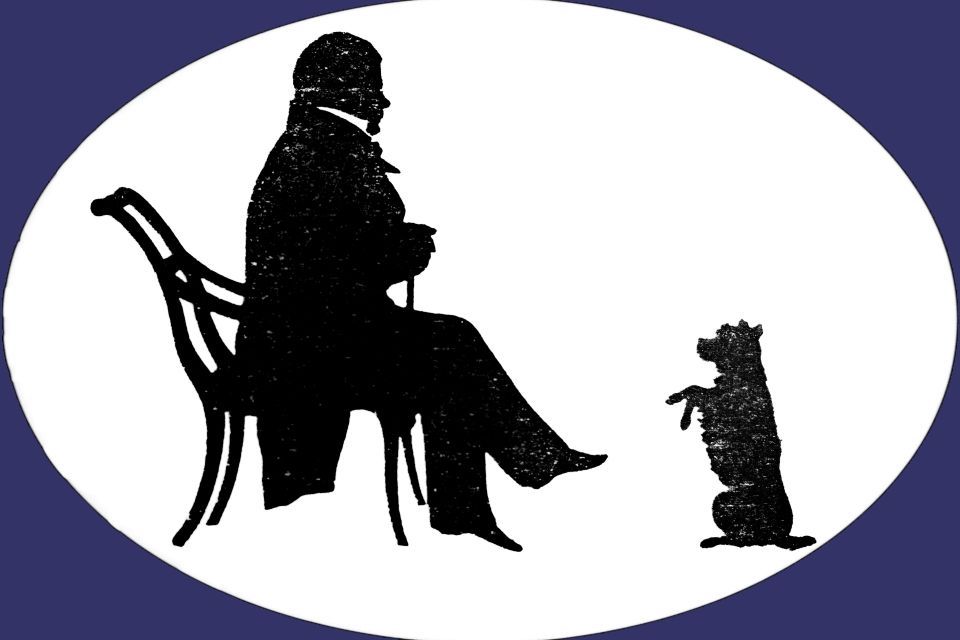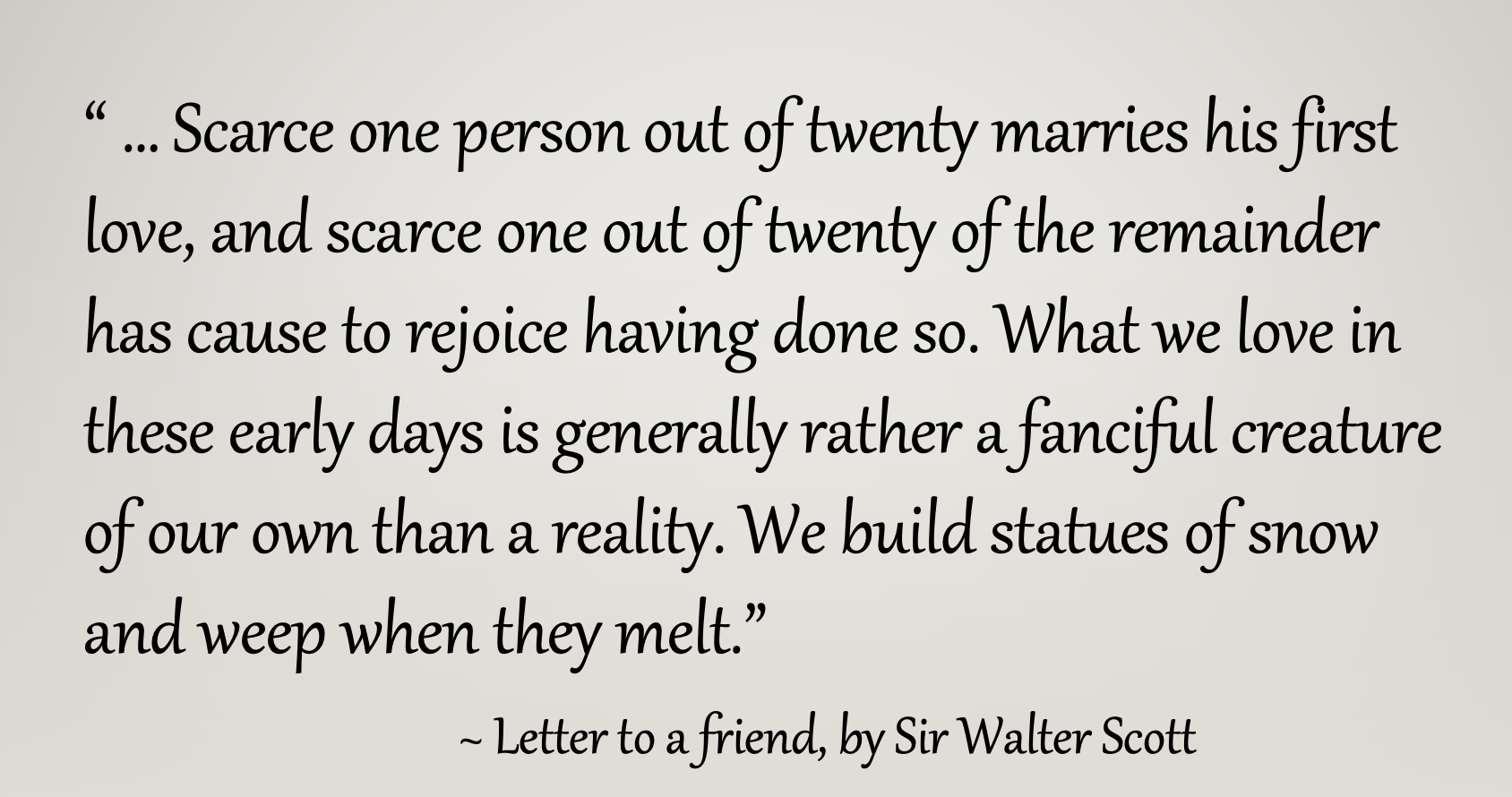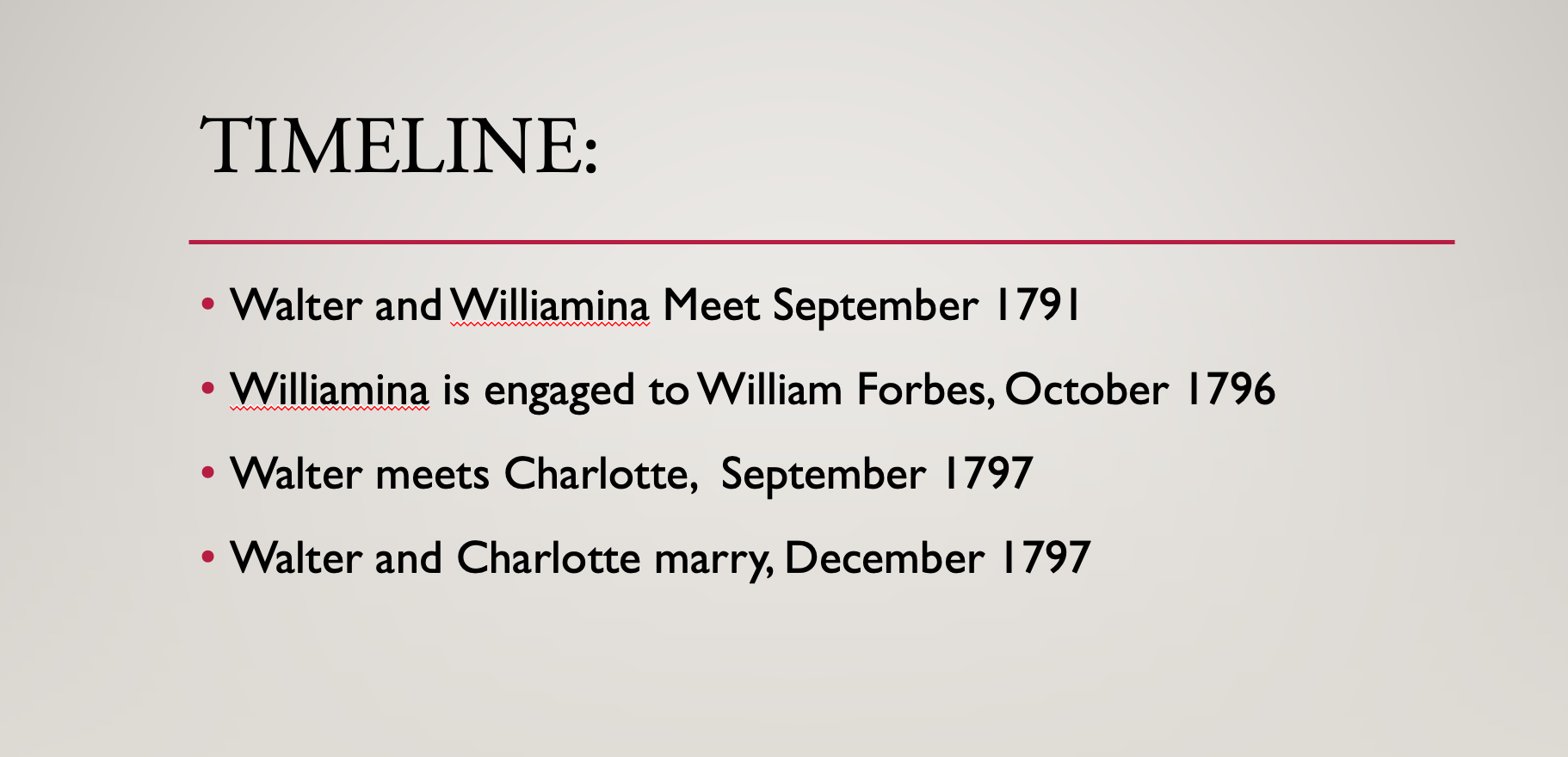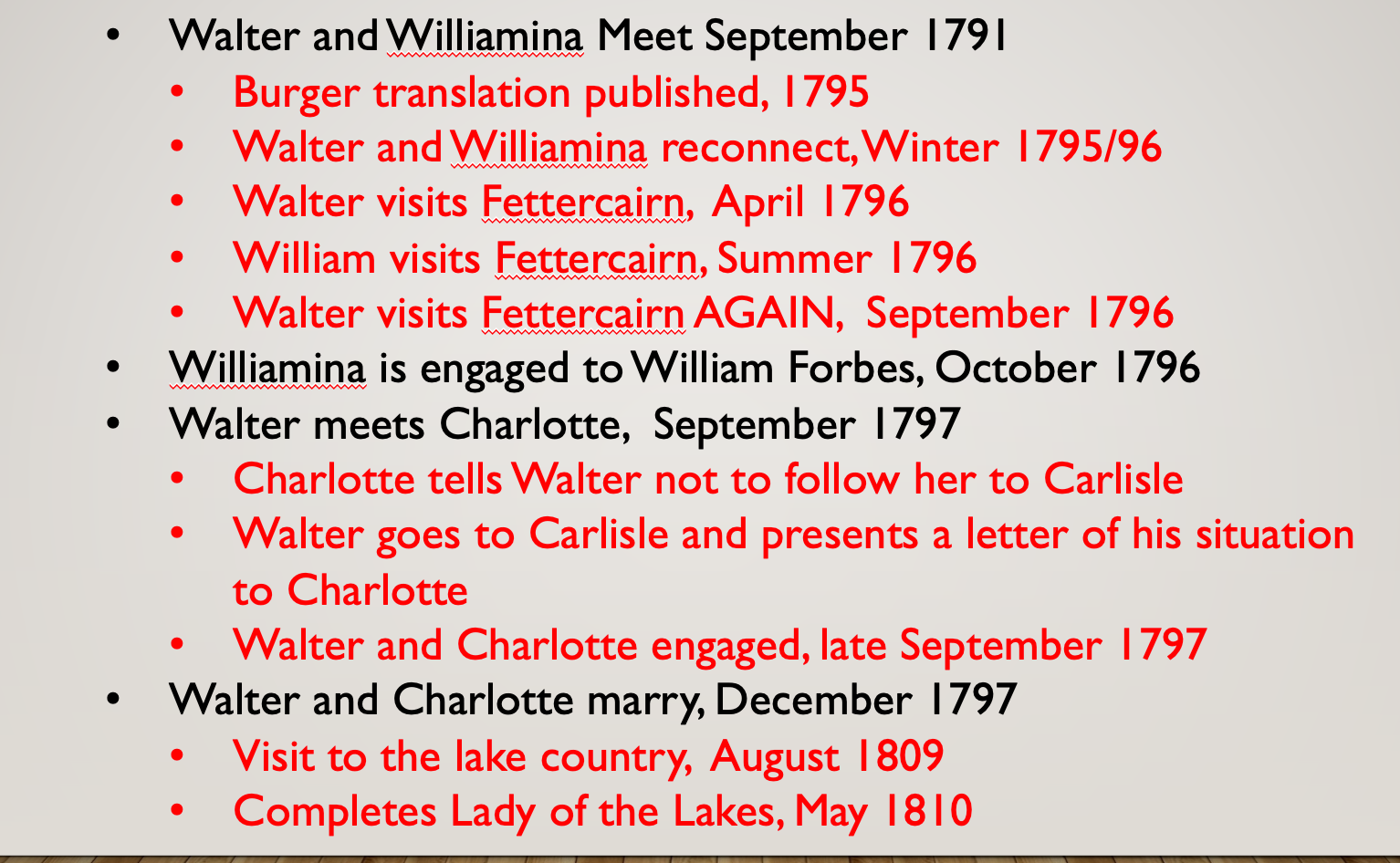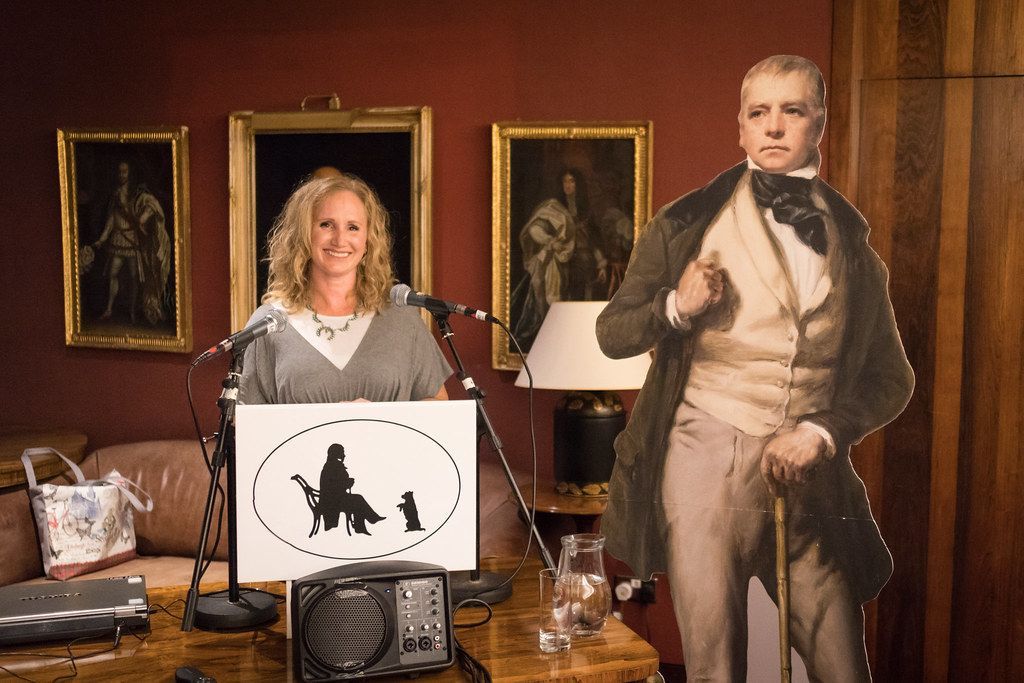Writing the Love Story of Sir Walter Scott
Thursday 14th September 2017
Summary of the Talk:
The speaker introduced American novelist Josi S. Kilpack, known for over 25 novels including a series of culinary mysteries and a cookbook. More recently, she has turned her focus to historical romance. Her novel The Lady of the Lakes was of particular interest to the Sir Walter Scott Club due to its engagement with Scott’s early romantic life.
Kilpack, a Utah-based mother of four and member of the Church of Jesus Christ of Latter-day Saints, acknowledged the cultural and historical differences she encountered when writing about a Scottish figure. She described the challenges of balancing historical accuracy with narrative fiction and emphasised her role as a storyteller rather than a historian.
The novel focuses on Scott’s early romantic attachments—first to Williamina Belsches (later Stewart) and then to Charlotte Carpenter (later Scott). Kilpack described how the five-year courtship of Williamina, ending in disappointment, contrasts with his rapid engagement and marriage to Charlotte in 1797. She drew from several biographies, noting their contradictions and the biases present, especially in portrayals of Charlotte as a “second choice.”
She shared a quote that inspired the novel:
“A scarce one person out of 20 marries his first love and scarce one out of 20 of the remainder has cause to rejoice in having them. We build statues of snow and weep when they melt.”
Kilpack explained her approach to constructing the narrative using romance novel structures and noted that Charlotte was a difficult character to flesh out due to sparse biographical material. She also explained her creative decisions, such as referring to Williamina as “Mina” in the novel to avoid confusion with other characters named William.
She conducted extensive research using Lockhart's biography and two other modern accounts, built a timeline from Scott’s early 20s, and included extensive chapter notes distinguishing fact from fiction. She acknowledged the creative liberties taken, such as inventing Scott’s reason for being at Greyfriars Kirk when he met Williamina, since historical records were unclear.
During the Q&A, Kilpack revealed her admiration for Scott and her excitement at finally visiting Edinburgh. She commented on how visible Scott’s legacy is in the city, contrasting it with how little known he is among Americans today. She also reflected on the practical and grounding role Charlotte may have played in Scott’s life compared to the youthful, poetic idealism of Williamina.
Bulletin Points:
- Josi S. Kilpack discussed her historical romance The Lady of the Lakes, which fictionalises Walter Scott’s romantic life.
- The novel centres on Scott’s relationships with Williamina Belsches and Charlotte Carpenter.
- Kilpack aimed to remain respectful to historical facts while shaping the story around traditional romance narrative structures.
- She acknowledged the challenges of writing about Charlotte due to limited and conflicting source material.
- Extensive research informed the novel, and chapter notes were added to clarify fact vs fiction.
- Kilpack described her process, motivations, and creative choices, making clear her identity as a storyteller rather than historian.
Interesting Points
- Quote That Inspired the Novel:
The idea that “we build statues of snow and weep when they melt” perfectly captures the shift from youthful romantic idealism to adult emotional realism. It’s a poignant insight into Scott’s emotional maturity. - Charlotte’s Lack of Literary Recognition:
Kilpack noted how Charlotte received little attention in biographies and literary history, despite her steadying influence on Scott. One attendee mentioned that Scott never wrote poems for her, possibly suggesting she was “off-limits” in his creative life. - Transatlantic Literary Perspective:
The contrast between Scott’s omnipresence in Scotland and relative obscurity in the US highlights differences in national literary canons. Kilpack herself was only vaguely familiar with Scott before starting her research. - Romantic Narrative Structure:
Kilpack applied romance tropes such as “meet-cute,” “dark night of the soul,” and “grand gesture” to real events, showing how Scott’s life aligns surprisingly well with fictional storytelling conventions. - Charlotte’s Mysterious Background:
Conflicting accounts of Charlotte’s youth—including claims about her mother’s affair and potential exile during the French Revolution—left Kilpack with significant interpretive freedom. She handled this by acknowledging uncertainty and focusing on plausible motivations. - Scott’s Lingering Resentment:
Kilpack noted that Scott reportedly refused to say Williamina’s name for years, indicating the depth of his emotional wound. - Scott and Dogs at Abbotsford:
Kilpack remarked on the cultural difference between the US and UK in dog-friendliness, delighted to learn Abbotsford welcomes dogs—a nice, humanising anecdote connecting Scott to everyday life.
Josi S. Kilpack hated to read until her mother handed her a copy of The Witch of Blackbird Pond when she was 13. From that day forward, she read everything she could get her hands on and credits her writing “education” to the many novels she has “studied” since then.
She began writing her first novel in 1998 and has written thirty-three novels, one cookbook, and several short stories since then. She is a four-time Whitney Award winner, including two Novel of the Year awards for Lord Fenton's Folly and As Wide as the Sky and a Best of State winner in Fiction.
She writes her national women's fiction under the pen name of Jessica Pack (say Josi Kilpack really fast and you'll see why she chose it). Josi currently lives in Northern Utah and is the mother of 4 wonderful kids.
Selected slides from the Powerpoint below.
Introduction by Prof. Peter Garside:
It’s a special pleasure to welcome as this evening’s speaker the American novelist Josi S. Kilpack. Josi has written some 25 novels to date, including a 12-book series intriguingly categorised as culinary mysteries, as well as one more straightforward cookbook. More recently she has turned to historical romance, and it was one of these titles, The Lady of the Lakes, with its strong echoing of Scott’s most famous poem, that first drew the Club’s attention to her as a desirable speaker. On the other hand, Josi hails from the state of Utah on the far side of the USA, where she has a family of four children and is a member of the Church of Jesus Christ of Latter-day Saints, and it seemed that us twain were never likely to meet. Apprised that Josi might be over here this autumn, Lee Simpson as our Events Convenor nevertheless pounced, and with her generous agreement and a slight rejigging of our Programme I’m delighted to say we procured our goal.
First published in March last year, The Lady of the Lakes, is indeed about Walter Scott, focussing on two crucial romances in his mid-twenties, his courtship of the heiress Williamina Belsches, which took him on at least one unavailing visit to her family home in Fettercairn in Kincardineshire, and his more successful pursuit of Charlotte Carpenter (born Charpentier), then a ward of the Marquess of Downshire, which was mainly played out in the setting of Gilsland, a spa resort in Cumberland close to the Roman Wall. There’s a sort of common understanding that Scott’s apparent rejection by Williamina in favour of a more socially advantageous suitor led to a kind of rebound match with Charlotte less than a year later. But The Lady of Lakes depicts a more complex pattern than this. Having just returned from Gilsland myself, almost exactly 220 years since Scott was there with Charlotte, I can hardly think of a better situation for Scott’s adventurous yet at the same time innately practical side to find expression. Josi’s work also mirrors Scott’s in skilfully blending known ‘facts’, imaginative projections based on probability, and the odd moment of artistic license, and no doubt she will also want to talk about this aspect of her writing too.
There’s clearly much to discuss, so without any more delay over to our speaker, Josi Kilpack, whose tittle has been slightly amended to ‘Writing Walter and Charlotte’s Love Story.
Synopsis:
Many scholars and readers believe that Sir Walter's Scott never overcame the heartbreak he felt when Williamina Stuart chose his friend, William Forbes, and that his unrequited love was played out in his novels. While no reader can deny how well he captures the loss of love in his literary works, Scott did overcome the rejection and go on to have a solid marriage with Charlotte Carpenter, a catholic-born Frenchwoman with a family history shadowed in scandal. My book, Lady of the Lakes, follows both love stories--the one lost and the one found--and attempts to capture the influences of both women on the man and the writer Sir Walter Scott would become. Though some fictional license was taken to create a full story, chapter notes show where I used fact and where I inserted fiction to create the expected arc of the story. I am not a scholar, but I am a storyteller and tried to capture these people in hopes to give some legacy to the lives they lived and the influence they had on the world we live in now.
